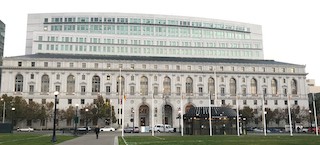In 2021, the California Supreme Court “sketch[ed] the general framework governing bail determinations.” In re Humphrey (2021) 11 Cal.5th 135, at 152. There, Mr. Humphrey, age 63 and African American, had been charged with first degree residential robbery (Penal Code § 211) and burglary (Penal Code § 459), infliction of injury on an elderly adult (Penal Code § 368(c)) and misdemeanor theft from an elderly adult (Penal Code § 368(d)) (it was a small $5 bottle of cologne and $2 in cash).
The victim was 79 years old. This was a third strike case for Humphrey. Bail was set at $600,000. Humphrey was unemployed. The crime took place in an “old folks' home” in San Francisco where both Humphrey and the victim lived, but on different floors.
Humphrey challenged the bail amount as being unreasonably high. He could not afford to post bail, so the bail, set by the judge using a bail schedule for the alleged crimes and Humphrey’s criminal history, was unconstitutional, he argued.
The First Appellate District Court of Appeals agreed with Humphrey and remanded the case with orders that the judge consider Humphrey’s ability to post bail and with consideration of less restrictive alternatives in the event he could not afford bail. Id., at 156.
 Court of Appeal 1st District San Francisco
Court of Appeal 1st District San Francisco
The Supreme Court affirmed, holding, “An arrestee may not be held in custody pending trial unless the court has made an individualized determination that . . . detention is necessary to protect victim or public safety, or ensure that defendant’s appearance, and there is clear and convincing evidence that no less restrictive alternative will reasonably vindicate those interests.” Id., at pp. 139-140. Put another way, “detention is impermissible unless no less restrictive conditions of release can adequately vindicate the state’s compelling interests.” Id., at pp. 151-152.
Less restrictive alternatives can include a GPS monitor being attached to defendant, a stay away order from the victim, requiring him or her to attend daily Alcoholics Anonymous (AA) meetings or other rehabilitative classes, etc.
Humphrey did not concern a case where bail was denied under Penal Code § 12(d).
This article will summarize In re John Harris, Jr., a recent published opinion also out of the First Appellate District. The case is strikingly similar to Humphrey, except in Harris, the judge in San Mateo County Superior Court denied bail entirely.
Mr. Harris, now in his mid-fifties, was implicated by DNA in a violent rape that took place in March 1989, 32 years earlier. The underlying facts involved a woman waking up in her apartment to discover a man tying scarves around her ankles. The perpetrator had similar scarves tied around his forehead and mouth. He tied bandanas tightly around the victim’s eyes and neck.
The perpetrator then raped the victim, after which he strangled her and slashed at her neck with a serrated knife. The victim pleaded with him to stop and he threatened to gouge out her eyes and tried to stab her in the back, but was unable to injure her much because of the bluntness of the knife. Ultimately, the victim persuaded the man to leave and he did, but he left behind several scarves and his DNA.
In February 2021, a complaint was filed against Harris for attempted murder (Penal Code §§ 664(a), 187(a), 189) and aggravated mayhem (Penal Code § 205). As to both counts, the People alleged he used a deadly or dangerous weapon, the knife.
The same day the complaint was filed, the judge set bail at $5 million, despite the fact that the pretrial services court report recommended that Harris was an appropriate candidate for release on his own recognizance with enhanced monitoring.
On April 16, 2021, Harris filed a bail motion, relying in large part on Humphrey. Harris argued that because he was indigent, that there was no indication he was a flight risk and that he was not a danger to public safety because the crimes occurred over 32 years earlier and he had a limited criminal history in the intervening years. He also indicated that he had not threatened or tried to contact the victim since the alleged crime.
The trial court denied Harris bail under article 1, section 12 of the California Constitution. The court found that the charged offenses involved acts of violence on another person and based on the People’s proffer (which included statements from Harris’ ex wives since 1989 that he had a severe scarf fetish involving violent sex and even an admission to one that he raped a woman), there was clear and convincing evidence of a substantial likelihood that Harris’ release would result in great bodily harm to others.
Harris then filed a petition for writ of habeas corpus to the First Appellate District Court, challenging the trial court’s decision denying him bail.
The First Appellate District agreed in part with Harris and remanded the case to the San Mateo County Superior Court, finding that the judge erred in failing to set out explicit reasons on the record why less restrictive alternatives to detention could not reasonably protect the government’s interest in public or victim safety, as suggested in Humphrey and in failing to include those reasons in the minutes.
We present this summary to the reader to show what a judge must articulate very clearly in denying bail or even setting bail quite high.
The citation for the First Appellate District Court ruling discussed above is In re John Harris, Jr. (1st App. Dist., 2021) 71 Cal. App. 5th 1085, 287 Cal. Rptr. 3d 46.
For more information about setting bail, please click on the following articles:
 Court of Appeal 1st District San Francisco
Court of Appeal 1st District San Francisco